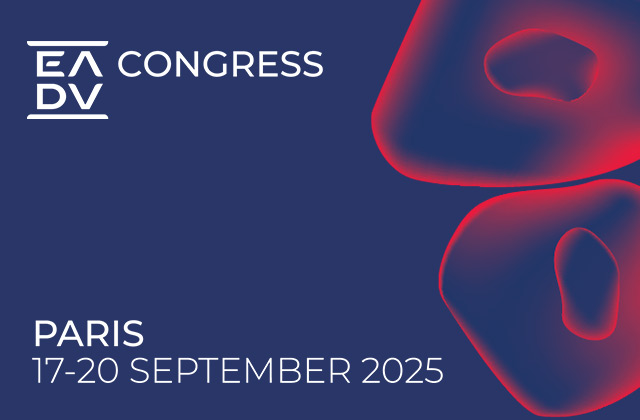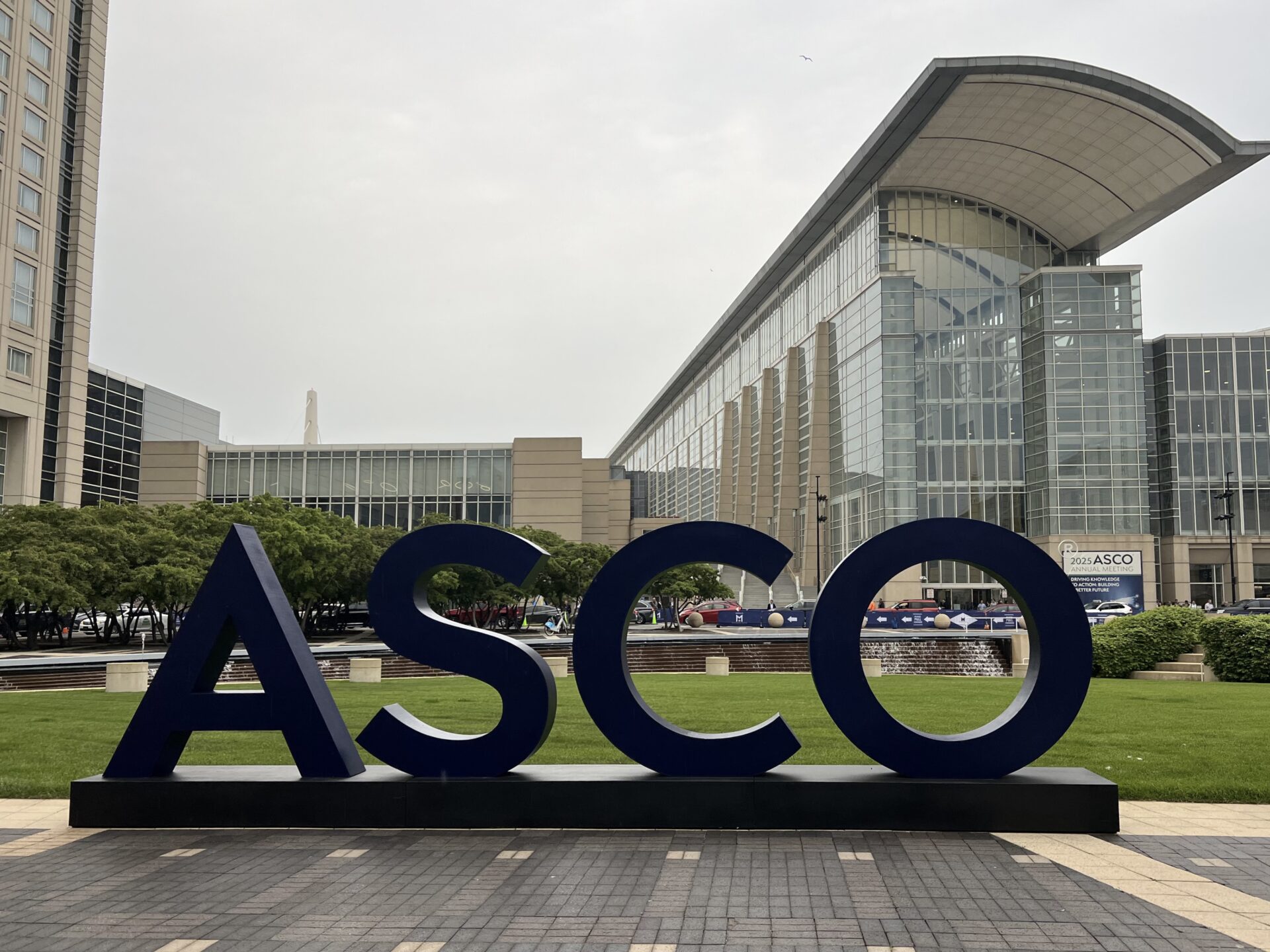
More than 20,000 delegates descended on Paris during the week of 17 September for the annual Congress of the European Academy of Dermatology and Venereology (EADV). This was the EADV’s largest meeting to date, with hundreds of speakers and presentations.
There’s no way for one person to cover everything that went on at EADV. However, I was able to peruse the full agenda, attend a significant number of sessions in person, and speak with a wide range of colleagues at the meeting. As a result, I noticed some key themes that became top of mind for me, reflecting on the conference, and implications for companies in this space, patients, and physicians.
The Value of Early Intervention
One key theme related to early intervention with highly effective treatments, particularly targeting super-responders, continuing the move towards disease modification that we’ve previously seen in other areas such as gastroenterology and rheumatology. The focus at EADV was primarily on prevalent inflammatory diseases, such as psoriasis and atopic dermatitis. However, the value of early intervention was also discussed in rarer diseases such as hidradenitis suppurativa and pemphigus vulgaris.
In psoriasis, multiple scientific presentations and industry symposia included data demonstrating the value of a “hit early, hit hard” approach. As one example, 3-year data from the guselkumab GUIDE study showed that super-responders treated within 15 months of diagnosis were more likely to remain treatment-free after 3 years, and that patients with disease duration <24 months, regardless of super-responder status, were more likely to have better long-term outcomes.
In the real world, data from the BeneBio study showed that reducing the dose of IL-17 or IL-23 inhibitors in patients with stable low disease activity is non-inferior to the typical standard of care, with successful dose reduction in 75% of patients at 18 months, suggesting that dose of highly effective biologics could be reduced in high responders, providing value for healthcare systems and potentially mitigating dose-dependent side effects for patients.
J&J’s novel anti-IL-23 peptide, icotrokinra, may carve a stronger place for oral advanced therapies earlier in the treatment algorithm, supporting the “hit hard, hit early” approach. Data presented included a strong 55-57% of patients achieving PASI90, compared to a 1-4% rate for those on placebo after 16 weeks of treatment. It also demonstrated head-to-head superiority vs. deucravacitinib – which, as announced post-conference, will be available at an 80%+ discount to cash pay US patients via BMS’s Patient Connect platform, setting up an efficacy vs. price battle.
In atopic dermatitis, there are also super-responders, defined comprehensively in one presentation as those who maintain an Eczema Area and Severity Index (EASI) ≤7, Peak Pruritis Numerical Rating Scale (PP-NRS) ≤4, Dermatology Life Quality Index (DLQI) ≤5, and Patient Oriented Eczema Measure (POEM) ≤7 through one year. Data presented for tralokinumab indicated that initial high levels of response (defined in this study as EASI90 at week 16, with or without DLQI 0/1) is more likely to lead to stable long-term response.
Modifying atopic dermatitis early may also stop the “atopic march,” keeping patients from developing asthma, allergies, and other atopy/Type 2 inflammation-driven conditions. In a disease with high paediatric prevalence, starting early may give children a better chance of avoiding long-term disease: real-world data presented from the BioDay registry showed successful tapering of dupilumab in paediatric patients, although it remains to be seen what the long-term impact on the atopic march will be.
In hidradenitis suppurativa, 2-year open-label extension (OLE) data for bimekizumab, comparing those with disease duration <2.38 years with those with disease duration ≥10.74 years, showed that patients with shorter disease duration were more likely to maintain high International Hidradenitis Suppurativa Severity Score (IHS4) improvements and had fewer draining tunnels through one and two years (46% vs. 23% IHS4-100, 70% vs. 53% no draining tunnels). This supports the case, in HS, for prescribing advanced treatments earlier, rather than cycling through multiple less effective treatments first.
With highly active pipelines in atopic dermatitis and hidradenitis suppurativa, there were a number of new data presentations in both diseases that informed our view of how those markets will develop.
In atopic dermatitis:
- Galvokimig, UCB’s bispecific IL-13 / IL-17A&F antibody, demonstrated 65% EASI-75 (vs. 12.3% placebo) in a phase 2a study. This indicates strong potential for both this molecule, as it progresses into Phase 2b later this year, but also inhibition of pathways other than Th2 (e.g. via IL-4/IL-13 inhibition) in treating atopic dermatitis, reflecting the broad drivers of this disease.
- New data for two therapies targeting T-cell rebalancing showed some potential. Rezpegaldesleukin, Nektar’s IL-2R agonist, showed up to 61% reduction from baseline EASI at week 16 vs 31% for placebo in a phase 2b study, and up to 46% EASI-75 vs 17% for placebo at the highest dose. Amgen / Kyowa Kirin’s rocatinlimab (OX40 mAb), which had previously shown significant but not impressive improvement in atopic dermatitis, showed 52-54% EASI-75 response (vs. 23.5% for placebo) alongside topical corticosteroids or calcineurin inhibitors in a new analysis of phase 3 data.
- Temtokibart, LEO’s IL-22RA mAb, showed significant improvement in EASI vs. baseline at 16 weeks (-41.7% for placebo at week 16 vs. -61.2% for 600 mg), and continued response through a further 18 weeks off treatment. However, potential challenges with the loading dose led to questions of whether better efficacy could be achieved.
In hidradenitis suppurativa:
- Incyte’s JAK1 inhibitor, povorcitinib, showed efficacy of 40-42% HiSCR50 vs. 28-30% for placebo at week 12 (and up to 28% HiSCR75 vs. 7-15% for placebo) in two Phase 2 trials, providing additional proof of concept for JAK inhibition in HS.
- Sanofi’s brivekimig (TNF/OX40 nanobody) demonstrated 67% HiSCR50 (Hidradenitis Suppurativa Clinical Response with at least a 50% reduction in total inflammatory lesions) at week 16 vs. 37% for placebo. This indicates the potential for efficacy, but the question remains as to whether, in phase 3, it would be more effective than TNF inhibition alone, given Humira’s demonstrated HiSCR50 response of up to 59% (vs. 28% for placebo) in its Phase 3 trials.
- Early data for two IL-1 inhibitors showed promise. A Phase 2 open-label study of lutikizumab (AbbVie, IL-1⍺/β inhibitor) showed 66% HiSCR50 at week 16 in biologic-naïve patients, complementing existing positive Phase 2b data in TNF-refractory patients. In addition, a Phase 1 trial for LAD191 (Almirall, IL-1RAP inhibitor) showed reduction in AN count and draining tunnels at 6 weeks, although in only 3 treated patients.
Exciting Emerging Science
The conference also highlighted some new applications in dermatological conditions for emerging technologies. For example, CD-19 targeted CAR-T therapies have the potential to achieve greater, more durable B cell depletion in autoimmune skin diseases. Off-the-shelf CAR-Ts and targeted CAR-Ts like DSG3-CAART (Cabaletta Bio) may hold promise in pemphigus vulgaris. However, reimbursement challenges at oncology-like prices—and profitability concerns at lower prices—may be difficult to solve. Another challenge may be dermatologist and patient acceptance of the complex CAR-T delivery process, from T-cell collection through lymphodepletion and infusion.
Moving on, Sanofi’s IL-1R3 antagonist SAR445399 reduced skin inflammation in a proof of mechanism study. It was hypothesised to impact IL-1, IL-33, and IL-36 signalling. Using canakinumab and spesolimab as comparators for IL-1 and IL-36 inhibition, respectively, the model was validated and the asset may show promise across multiple inflammatory skin diseases.
PN-881 (Protagonist Therapeutics), an oral peptide antagonist of all three dimeric forms of IL-17, showed in vitro inhibition of the IL-17 pathway, with comparable potency to bimekizumab. This indicates the potential—alongside J&J’s icotrokinra—to continue the shift towards oral therapies in diseases like psoriasis.
We are also seeing the exciting development of personalised approaches to treatment choice via, for example, the molecular profiling of dominant immune pathways and dosing to address patient unmet needs, although both still face challenges in real-world clinical practice. Alongside this, new data indicates benefits for patients via more treatment options for burdensome skin diseases in the future, but there remains a crowded and uncertain market for pharma companies to navigate.






